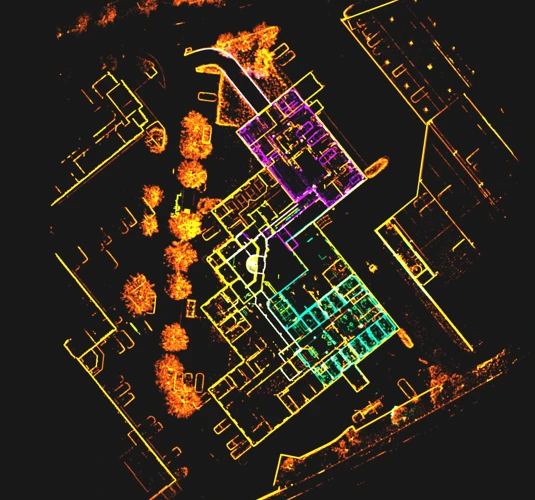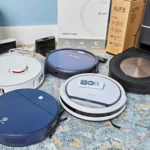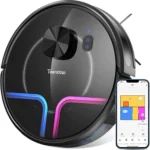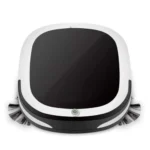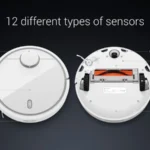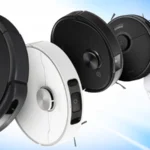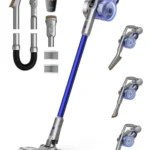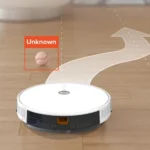As we dive deeper into the technological advancements of the 21st century, we see a wide range of innovative products that have made significant changes in our daily routines. In this modern era, one of the technologies that are growing in popularity is smart cleaning devices. Smart vacuum cleaners are a game-changer in the cleaning industry, providing a unique and seamless cleaning experience. However, what makes these cleaning machines stand out from their traditional counterparts? It’s the magic behind their seamless navigation and mapping, which is made possible by Simultaneous Localization and Mapping, also known as SLAM. In this article, we will explore this fascinating technology and its crucial role in smart vacuum cleaners.
What is Simultaneous Localization and Mapping (SLAM)?

As technology continues to advance, smart home appliances have become more and more sophisticated. Smart vacuum cleaners have particularly benefited from Simultaneous Localization and Mapping (SLAM) technology, which allows them to map and navigate your home autonomously. With SLAM, these cleaning devices can achieve a level of efficiency, effectiveness and safety that traditional vacuums cannot match. In this section, we will explore the basics of SLAM and how it enables smart vacuums to perform as they do. While we delve into this topic, feel free to check out our article on the benefits of SLAM in smart vacuum cleaners.
1. The Basics of SLAM
Simultaneous Localization and Mapping (SLAM) is a complex technology used in smart vacuum cleaners to map out your home and clean it effectively. SLAM in simple terms is a process where a machine can map out its surroundings and locate its position within the map. However, SLAM technology in smart vacuum cleaners is a little bit more complex than the standard mapping technology that is often used.
There are two main components of SLAM that make it different from traditional mapping technologies. These components are Localization and Mapping. Localization is the process of precisely locating a machine’s position within a given environment. Mapping involves building a map of the environment around the machine. A smart vacuum cleaner that utilizes SLAM technology will use both Localization and Mapping to navigate your home effectively and efficiently.
The process works by using various sensors that are integrated into the smart vacuum cleaner. These sensors help the machine to understand its surroundings by building a map of the environment while simultaneously identifying its precise location within that map. The machine uses this map to navigate around furniture and other obstacles and to clean the floor effectively. SLAM technology is constantly evolving to help smart vacuum cleaners to perform better and more efficiently.
SLAM technology has various applications in other industries, such as robotics, autonomous driving, and even augmented reality. However, in smart vacuum cleaners, the technology has revolutionized how we clean our homes. SLAM in smart vacuum cleaners is responsible for their autonomous navigation and accurate mapping functions.
2. How SLAM Works in Smart Vacuum Cleaners
Smart vacuum cleaners that use Simultaneous Localization and Mapping (SLAM) technology are equipped with various sensors that work together to accurately map and navigate your home. Here’s how SLAM works in smart vacuums:
1. Mapping: When you first start using your smart vacuum cleaner with SLAM technology, it will move around your home while the sensors create a 3D map of the environment. The sensors can be LiDAR sensors, camera-based sensors or a combination of both. This process allows the smart vacuum cleaner to recognize obstacles, identify rooms and develop a map of the cleaning area.
2. Localization: After the initial mapping is complete, the smart vacuum cleaner will use its sensors to determine its current location on the map. This process is called localization. SLAM technology allows the vacuum to locate itself even if it gets lost or stuck during a cleaning session.
3. Navigation: Once the smart vacuum cleaner knows its location on the map, it can navigate through your home while avoiding obstacles and cleaning efficiently. The vacuum cleaner continuously updates its location on the map to ensure that it doesn’t miss any spots while cleaning.
4. Obstacle Detection: SLAM technology in smart vacuums allows for more accurate detection of obstacles in the cleaning area because LiDAR sensors can pick up objects even when the room is dark. This means that the vacuum cleaner can detect and avoid obstacles like furniture, cords, and toys even when the lights are off.
SLAM technology allows smart vacuum cleaners to create an accurate map of your home, know where they are in that map, and navigate through your home more efficiently and effectively. This technology has revolutionized the way vacuum cleaners work, and it’s only going to get better with future advancements.
If you want to learn more about SLAM technology in smart vacuum cleaners, check out our other article on “SLAM Tech for Smart Vacuums”.
The Importance of SLAM in Smart Vacuum Cleaners
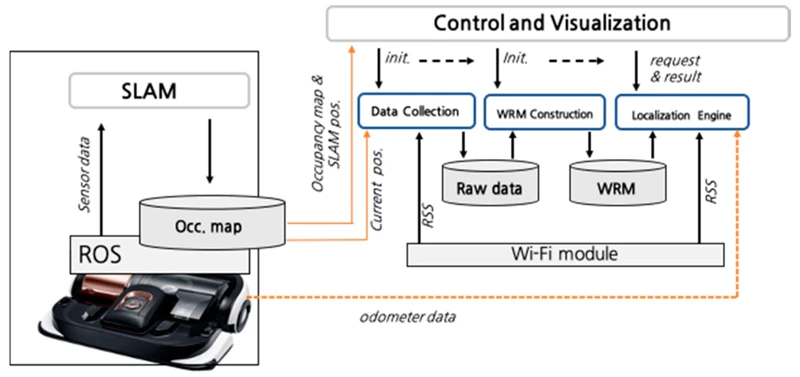
As smart home technology continues to evolve, one essential feature that stands out in smart vacuum cleaners is Simultaneous Localization and Mapping (SLAM). This advanced technology allows smart vacuums to map and understand the layout of your home accurately. This understanding plays a critical role in ensuring that the vacuum navigates your home safely, cleans efficiently and effectively, and helps avoid obstacles, even in the dark. In this section, we will discuss the significance of SLAM in smart vacuum cleaners and why it has become a vital part of cleaning your home.
1. Accurate Mapping of your Home
Accurate mapping of your home is one of the most important features of smart vacuum cleaners that operate using SLAM technology. With accurate mapping, the device can scan and create a 3D digital model of your home’s layout. This mapping is the foundation of how the smart vacuum cleaner navigates and cleans your home.
Mapping Your Home’s Layout
The SLAM technology enables the vacuum cleaner to scan and analyze your home’s layout accurately. It does this by using various sensors that capture and map the environment around it. By doing so, it can navigate around every corner and furniture, leaving no spot uncleaned. Once it creates a detailed map, the device can optimize its cleaning path, minimizing the time taken to finish cleaning your home.
Improved Cleaning Performance
Accurate mapping of your home allows the smart vacuum cleaner to clean your home more efficiently. It can avoid repeatedly cleaning areas it has already cleaned, and instead focus on the areas that still require cleaning. This feature significantly improves the overall cleaning performance of the device.
Real-time Location Tracking
Using SLAM technology, the smart vacuum cleaner can pinpoint its exact location in the home. It can detect and avoid obstacles and even adjust its cleaning patterns in real-time. For instance, if the vacuum cleaner detects a particular area that requires more cleaning, it can adjust its cleaning pattern to ensure that the area is cleaned thoroughly.
Long-term Memory
Once the device maps your home’s layout accurately, it stores that information in its memory. As a result, it can recognize modifications to the layout, such as new furniture or obstacles, and continue to clean around them. This feature ensures that the device continues to clean your home effectively, even as your home’s layout changes over time.
The SLAM technology’s accurate mapping feature is crucial for smart vacuum cleaners’ efficient performance. With an accurate map of your home’s layout, the device can clean every corner, optimize its cleaning path, and maximize its battery life. This feature ensures a hassle-free cleaning experience, saving you both time and energy.
2. Effective Cleaning
Effective cleaning is one of the most important factors for a smart vacuum cleaner. With SLAM, the vacuum cleaner can intelligently map the environment and clean every nook and corner without missing a spot. This ensures a more thorough and efficient cleaning process.
A smart vacuum cleaner with SLAM technology utilizes advanced algorithms to navigate and clean your home. These algorithms allow the vacuum cleaner to calculate an optimal cleaning path, avoiding obstacles and creating a complete digital map of your home. The combination of accurate mapping and obstacle avoidance provides a more efficient cleaning process than traditional vacuum cleaners.
SLAM algorithms also allow smart vacuum cleaners to adjust their cleaning patterns according to the environment. For instance, if the room is very cluttered, the vacuum cleaner can adjust its movements to ensure it covers all areas. Similarly, if there are any areas that need extra attention, the vacuum cleaner can focus more on those areas. By doing so, the vacuum cleaner can save time and energy while still providing a thorough cleaning.
With SLAM technology, the vacuum cleaner can easily locate and recognize different surfaces, including carpets, hardwood floors, and tiles. This enables it to adjust its cleaning settings for each surface accordingly. It can also identify areas that require more powerful suction power for deep cleaning.
Effective cleaning is one of the key benefits of SLAM technology in a smart vacuum cleaner. With its intelligent mapping and obstacle avoidance capabilities, the vacuum cleaner can clean your home more efficiently and thoroughly. If you want to learn more about how SLAM technology is transforming the world of smart vacuum cleaners, check out this article on future smart vacuum advancements with SLAM tech.
3. Safe Navigation
Safe navigation is an incredibly important aspect of any vacuum cleaner, particularly a smart vacuum cleaner that relies on the SLAM technology. With the ability to create a real-time map of your home and locate potential obstacles using various sensors, SLAM technology can help ensure that you avoid all types of obstacles and stay safe.
The following are some ways that SLAM can help ensure safe navigation:
- Obstacle detection and avoidance: By using a range of sensors such as LiDAR, cameras, and other hybrid sensors, SLAM can accurately detect and locate obstacles in real-time. This allows the smart vacuum cleaner to plan a safe and efficient route to ensure that it avoids obstacles and cleans your home effectively. Unlike traditional vacuum cleaners that may blindly bump into obstacles, SLAM technology provides an extra layer of safety and security.
- Mapping technology: Traditional vacuum cleaners do not have sophisticated mapping technology that smart vacuum cleaners come equipped with, thanks to SLAM technology. Using a variety of sensors, SLAM is able to create a detailed and accurate map of your home, allowing the vacuum cleaner to plan routes and avoid obstacles with remarkable accuracy. This helps prevent accidents and ensures that the vacuum cleaner does not get stuck.
- Low-light navigation: Occasionally, your vacuum cleaner may need to navigate in low-light conditions or even complete darkness. This can be a challenge for traditional vacuum cleaners, but not for those equipped with SLAM technology. Using sophisticated mapping and sensor technology, smart vacuum cleaners can work seamlessly regardless of the lighting conditions, making them incredibly safe to use at any time of the day or night.
Safe navigation is essential for any smart vacuum cleaner, and SLAM technology makes it possible for these innovative cleaning devices to perform optimally while minimizing the risk of accidents. By ensuring obstacle detection and avoidance, providing accurate mapping technology, and working seamlessly in low-light conditions, SLAM technology makes smart vacuum cleaners one of the safest and most effective cleaning devices from several options available to consumers.
How Smart Vacuum Cleaners Use SLAM
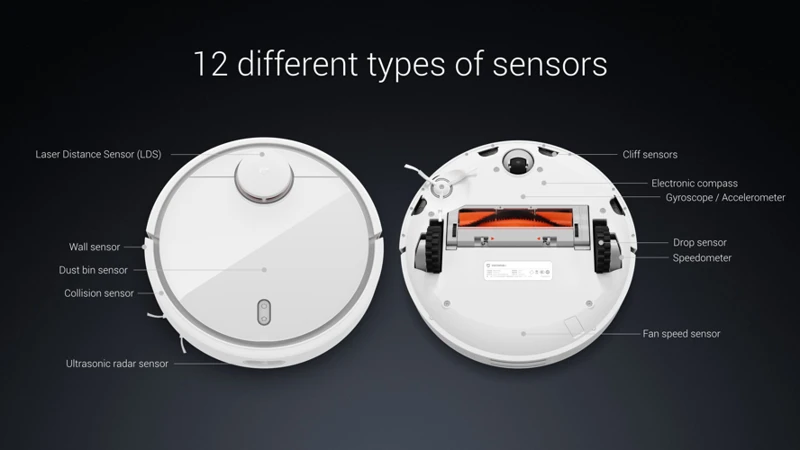
As we’ve learned in the previous section, SLAM technology is a key component that allows smart vacuum cleaners to effectively navigate and map out the environment they are in. Now, let’s dive deeper into the different ways that smart vacuum cleaners utilize SLAM to achieve optimal performance. Understanding how SLAM works in smart vacuums can help you troubleshoot any potential issues with your device and even compare it to traditional mapping methods. Let’s explore the different ways smart vacuums use SLAM and the benefits of each approach.
1. SLAM with LiDAR Sensors
SLAM with LiDAR Sensors
One of the most popular methods for smart vacuum cleaners to implement SLAM is by using LiDAR sensors. LiDAR stands for Light Detection and Ranging, and it works by emitting laser beams that bounce off surfaces and return to the sensor. By measuring the time of flight and intensity of the laser beams, the sensor can create a 3D map of the room and its objects.
LiDAR sensors have several advantages over other types of sensors, which may explain their widespread use in smart vacuum cleaners. Here is a table outlining some of the main advantages and disadvantages:
| Advantages | Disadvantages |
|---|---|
| Highly accurate and detailed maps | Relatively expensive |
| Can work in low-light conditions | May have difficulty with reflective surfaces |
| Fast data acquisition and processing | May generate a lot of noise or false positives |
LiDAR sensors are used in a wide range of smart vacuum cleaners, including some of the most popular models on the market. They are particularly effective at creating detailed and accurate maps of the home, which can then be used to guide the vacuum’s movements and ensure thorough cleaning.
However, it is important to note that LiDAR sensors may have difficulty with reflective surfaces, such as mirrors or glass. They may also generate false positives or noise in certain situations, which can affect their accuracy. Smart vacuum owners should be aware of these limitations and take appropriate troubleshooting steps if needed. For more information on troubleshooting SLAM issues with LiDAR sensors, check out our SLAM Troubleshooting Tips article.
Despite these challenges, LiDAR-based SLAM remains an important and effective tool for smart vacuum cleaners. When used properly, it can improve the efficiency and effectiveness of cleaning while also providing a high degree of convenience and ease of use for homeowners. To learn more about the benefits of SLAM compared to traditional mapping methods, check out our article on SLAM vs Traditional Mapping for Smart Vacuum Cleaners.
2. SLAM with Camera-based Sensors
One of the most common methods of implementing SLAM in smart vacuum cleaners is through the use of camera-based sensors. These sensors use a series of cameras that are placed around the vacuum cleaner to create a 360-degree view of the surrounding environment. This allows the vacuum cleaner to detect obstacles, map its surroundings, and accurately navigate through different areas of your home. Here are some key points to understand how SLAM with camera-based sensors works:
- Multiple Camera Views: One key advantage of using camera-based sensors is the ability to capture multiple camera views. This helps the vacuum cleaner to get a detailed and accurate 3D map of its surroundings. The camera sensors capture images at different angles and triangulate data to create a detailed 3D image of the environment in real-time.
- Deep Learning: Most modern smart vacuum cleaners use advanced deep learning algorithms to analyze the images captured by the camera. These algorithms help the vacuum cleaner to recognize different objects and obstacles, and understand the layout of the environment. This is particularly useful for navigating complex environments like multi-storey buildings.
- Real-Time Mapping: With camera-based sensors, the vacuum cleaner is able to create a 3D map of your home in real-time. This means that as the vacuum cleaner moves around, it is able to build an accurate map of the environment in real-time. This allows the vacuum cleaner to effectively navigate through different areas of your home without getting stuck or colliding with obstacles.
- Improved Navigation: Camera-based sensors help the vacuum cleaner to better understand the surroundings and improve navigation. The vacuum cleaner is able to detect different features of your home such as stairs, doors, and furniture, and avoid collisions or falls. This makes it easier for the vacuum cleaner to move around your home and clean even hard-to-reach areas.
- Limitations: Camera-based sensors are highly effective in well-lit environments with a clear view, but they may struggle in low-light or dark environments. They also require significant processing power and memory to quickly analyze the large amounts of image data captured in real-time.
Camera-based sensors provide a highly effective and reliable way to implement SLAM in smart vacuum cleaners. They offer the ability to create real-time 3D maps of your home, accurately detect obstacles, and safely navigate through different areas of your home. However, they do come with limitations and may not work as effectively in some environments.
3. SLAM with Hybrid Sensors
Hybrid sensors are a combination of two or more sensors that work together in smart vacuum cleaners to create accurate maps of your home. These sensors include a combination of LiDAR, camera-based sensors, and other sensors such as gyroscopes and accelerometers to provide a robust system for SLAM.
Incorporating LiDAR Sensors
Hybrid sensors with LiDAR work together to create a much more accurate map of your home, since LiDAR measures the distance and shape of an object in a 3D space. This means that the smart vacuum cleaner can detect obstacles and other features in the home accurately, improving the overall effectiveness and efficiency of the cleaning process.
Camera-based Sensors in Hybrid Systems
Camera-based sensors are also used in hybrid systems to provide additional information about the home’s environment. By capturing images of the room and using computer vision, the smart vacuum cleaner can detect further details such as furniture, walls, and other objects. This allows the vacuum cleaner to differentiate between furniture and other obstacles, and to detect when furniture has been moved so that it can update the map of the home accordingly.
Other Sensors in Hybrid Systems
Gyroscopes and accelerometers are also used in hybrid systems to help the smart vacuum cleaner navigate around obstacles in the home, without getting stuck or hitting any furniture. These sensors can detect the tilt and movement of the vacuum cleaner, which allows it to make more accurate turns and navigate around corners more effectively. This functionality ultimately improves the vacuum cleaner’s dependability and consistency.
Hybrid sensors add an additional layer of customization to the smart vacuum cleaner’s SLAM system, as they can be tailored to specific environments and needs. By using a variety of sensors, the vacuum cleaner has access to a wealth of information about the home, which allows it to create an accurate map and navigate more effectively. The combination of LiDAR, camera-based sensors, and other sensors in hybrid systems ensures the vacuum cleaner can move efficiently and intelligently through your home, providing effective cleaning and making cleaning more convenient and enjoyable.
Benefits of SLAM in Smart Vacuum Cleaners
As we’ve already discussed, Simultaneous Localization and Mapping (SLAM) technology is a game changer for smart vacuum cleaners. However, the true value of SLAM becomes apparent when we analyze the benefits it brings to these devices. By leveraging advanced sensors and algorithms, SLAM technology improves the efficiency, dependability, and convenience of smart vacuums, making them an indispensable tool for any modern home. Let’s take a closer look at the key benefits of using SLAM in smart vacuum cleaners.
1. Improved Efficiency and Effectiveness
Simultaneous Localization and Mapping (SLAM) technology has revolutionized the way smart vacuum cleaners operate, leading to improved efficiency and effectiveness. Here are some ways in which SLAM technology enhances the performance of smart vacuum cleaners:
- Optimized Cleaning Route: With the help of SLAM technology, smart vacuum cleaners can map the layout of your home, ensuring that they clean every part of your house efficiently. By calculating the best route to take, the vacuum cleaner can move seamlessly from one room to another, avoiding obstacles in its path.
- Precision Cleaning: The mapping function of SLAM ensures that the vacuum cleaner does not miss any spots in your home. This means that no area is overlooked and the cleaning is thorough, leaving your home looking spotless.
- Automatic Charging and Resumption: Smart vacuum cleaners that are equipped with SLAM technology can identify when they need to recharge and head back to their dock automatically. Once the battery is fully charged, the vacuum resumes cleaning from where it left off. This eliminates the need for manual intervention, leading to improved efficiency and effectiveness.
- Smart Obstacle Avoidance: SLAM technology enables the smart vacuum cleaner to detect obstacles in its path and avoid them without any human intervention. This ensures that the vacuum cleaner does not damage your furniture, walls, or any other items in your home.
The improved efficiency and effectiveness provided by SLAM technology has made smart vacuum cleaners more reliable and efficient in their cleaning capacity. These features have made SLAM smart vacuum cleaners a popular choice for homeowners seeking a convenient and effective cleaning solution.
2. Dependability and Consistency
When it comes to cleaning your home, you want a smart vacuum cleaner that is dependable and consistent in its performance. This is where Simultaneous Localization and Mapping (SLAM) technology comes in. With SLAM, your vacuum cleaner can create accurate maps of your home and navigate through it seamlessly. This means you can trust that it will clean all areas of your home, without getting stuck or missing spots.
Dependability: Smart vacuum cleaners that use SLAM technology are highly dependable. They are able to sense and avoid obstacles in their path, without getting stuck or causing damage to your furniture or walls. They can adapt to changes in the environment, such as moving chairs or rugs, and continue cleaning without interruption. With SLAM, you can trust that your vacuum cleaner will get the job done right, every time.
Consistency: Another benefit of SLAM technology in smart vacuum cleaners is consistency. The high-precision mapping and positioning capabilities of SLAM ensure that the vacuum cleaner follows the same path every time it cleans a room. This means it doesn’t miss any spots or areas, resulting in a more thorough clean. You can rely on your smart vacuum cleaner to provide consistent and reliable cleaning performance every time you use it.
Here is a table summarizing the dependability and consistency benefits of SLAM technology in smart vacuum cleaners:
| Benefit | Description |
|---|---|
| Dependability | Smart vacuum cleaners using SLAM can sense and avoid obstacles, making them highly dependable while cleaning. |
| Consistency | SLAM technology ensures that the vacuum cleaner follows the same path every time it cleans a room, resulting in a more thorough clean. |
SLAM technology offers many benefits for smart vacuum cleaners, including improved dependability and consistency. With these benefits, you can trust that your vacuum cleaner will provide effective and reliable cleaning performance every time you use it.
3. Convenience and Ease of Use
One of the biggest benefits of Simultaneous Localization and Mapping (SLAM) in smart vacuum cleaners is the convenience and ease of use it provides for homeowners. With SLAM technology, homeowners no longer have to worry about manually navigating their vacuum cleaner or constantly monitoring its progress. Instead, the vacuum cleaner can navigate and clean on its own, making the cleaning process effortless and allowing homeowners to focus on other tasks.
Convenience: SLAM technology makes using a smart vacuum cleaner incredibly convenient. Homeowners can simply set their vacuum cleaner to clean at specific times or on specific days, and the vacuum cleaner will do the rest. There’s no need to manually move the vacuum cleaner from room to room or worry about it getting stuck on furniture or obstacles. SLAM technology allows the vacuum cleaner to map out its surroundings and navigate around obstacles on its own, making cleaning a hassle-free experience.
Ease of Use: In addition to being convenient, smart vacuum cleaners with SLAM technology are also incredibly easy to use. Most models allow homeowners to control their vacuum cleaners with a smartphone app, which means they can start or stop the vacuum cleaner from anywhere in their home. This makes it easy to keep an eye on the cleaning progress or to pause the vacuum cleaner if needed. Additionally, many models have voice control options, which means homeowners can control their vacuum cleaner with voice commands through their smart speaker.
To summarize, SLAM technology in smart vacuum cleaners provides homeowners with convenience and ease of use, freeing up their time and making cleaning an effortless task. The hassle-free, automated cleaning process is perfect for busy individuals or those who simply want to take cleaning off their to-do list.
Conclusion
In conclusion, it is evident that Simultaneous Localization and Mapping (SLAM) plays a crucial role in the functionality of smart vacuum cleaners. The incorporation of SLAM allows these automated cleaning devices to operate with a high degree of accuracy and precision, providing thorough cleaning while also ensuring the safety of users and their belongings.
Through the use of LiDAR, camera-based, or hybrid sensors, smart vacuum cleaners are able to build real-time maps of their environment, effectively navigate through complex spaces, and avoid potential obstacles.
SLAM technology offers numerous benefits, including improved efficiency and effectiveness, dependability and consistency, as well as convenience and ease of use. By taking advantage of this technology, smart vacuum cleaners can operate more efficiently and effectively than ever before, providing a clean and comfortable environment for users with minimal effort.
Overall, the integration of SLAM into smart vacuum cleaners represents a significant step forward in the development of home automation technologies. As this technology continues to advance, it is likely that we will see even more innovative solutions that make our lives simpler, more convenient, and more comfortable.
Frequently Asked Questions
How does SLAM technology work?
SLAM technology uses sensors to map an unknown environment while also tracking the position of the sensor in the environment. By combining mapping and tracking, the sensor can create a precise, real-time map of the environment.
What sensors are used in smart vacuum cleaners?
Smart vacuum cleaners use a variety of sensors including LiDAR, camera-based sensors, and hybrid sensors that combine different types of sensors to create a more accurate map of the environment.
What is the benefit of using SLAM technology in smart vacuum cleaners?
SLAM technology allows for more accurate mapping of your home, more effective cleaning, and safer navigation for the vacuum cleaner.
How does SLAM technology improve efficiency and effectiveness in smart vacuum cleaners?
By creating a more accurate map of your home, smart vacuum cleaners can clean more efficiently and effectively, avoiding areas that have already been cleaned and focusing on areas that need more attention.
What is the difference between LiDAR and camera-based sensors?
LiDAR sensors use lasers to create a precise 3D map of the environment, while camera-based sensors use visual images to create a visual map of the environment. LiDAR sensors are more expensive but offer more accurate mapping.
Can SLAM technology be used in other types of robots?
Yes, SLAM technology is used in a variety of robots including autonomous cars, drones, and other types of robots that need to navigate an unknown environment.
What is the role of SLAM in safe navigation for smart vacuum cleaners?
SLAM technology allows the vacuum cleaner to create a precise map of the environment and avoid obstacles, ensuring safe navigation and preventing collisions.
What are the benefits of using a smart vacuum cleaner over a traditional vacuum cleaner?
Smart vacuum cleaners offer more efficient and effective cleaning, convenience and ease of use, and can be controlled remotely using a smartphone or other device.
How do hybrid sensors work in smart vacuum cleaners?
Hybrid sensors combine different types of sensors, such as LiDAR and camera-based sensors, to create a more accurate map of the environment, allowing for more efficient and effective cleaning.
Can SLAM technology improve over time?
Yes, SLAM technology can improve over time as the algorithms used to map and track the environment become more advanced and as more data is collected and analyzed.
